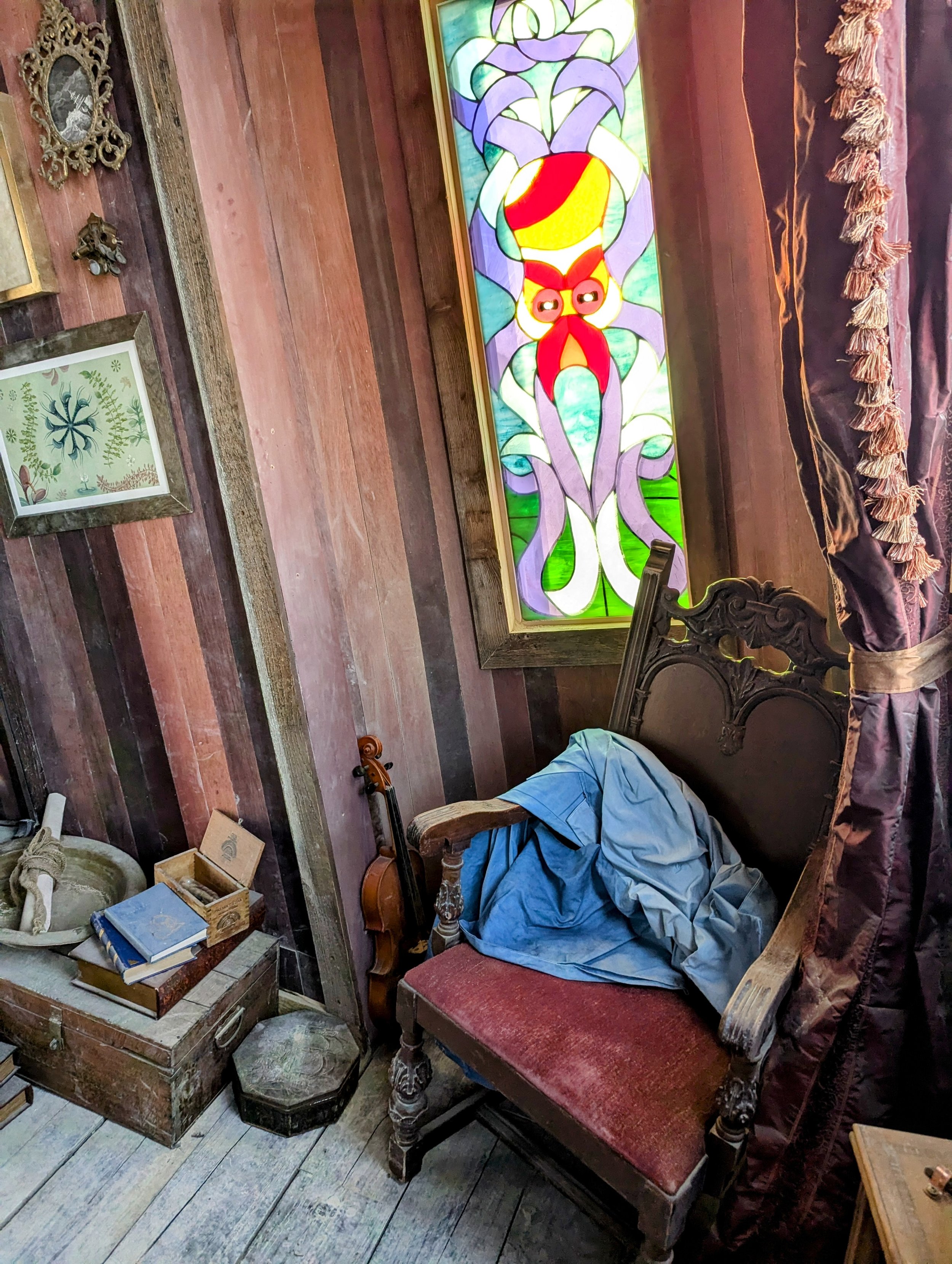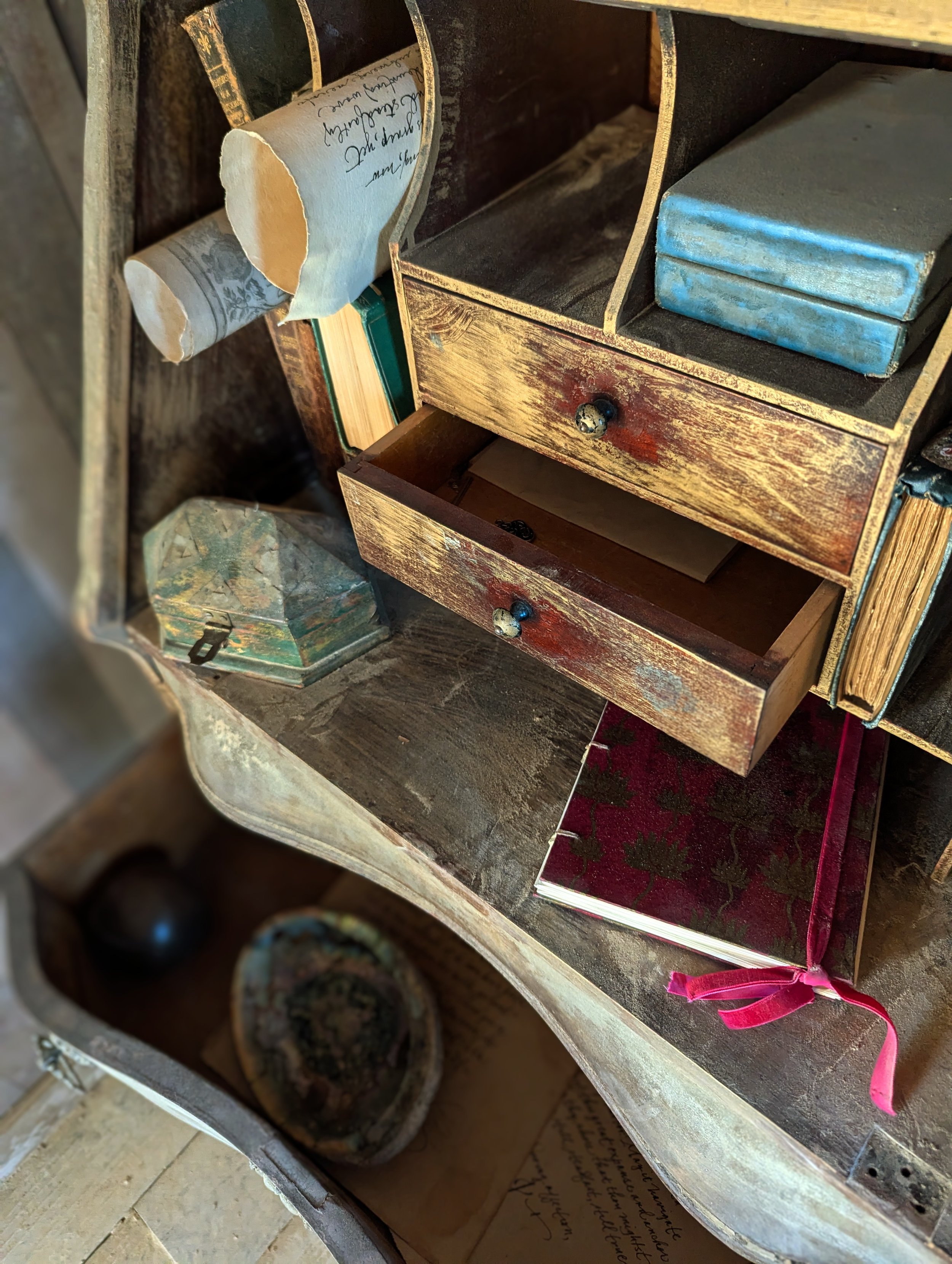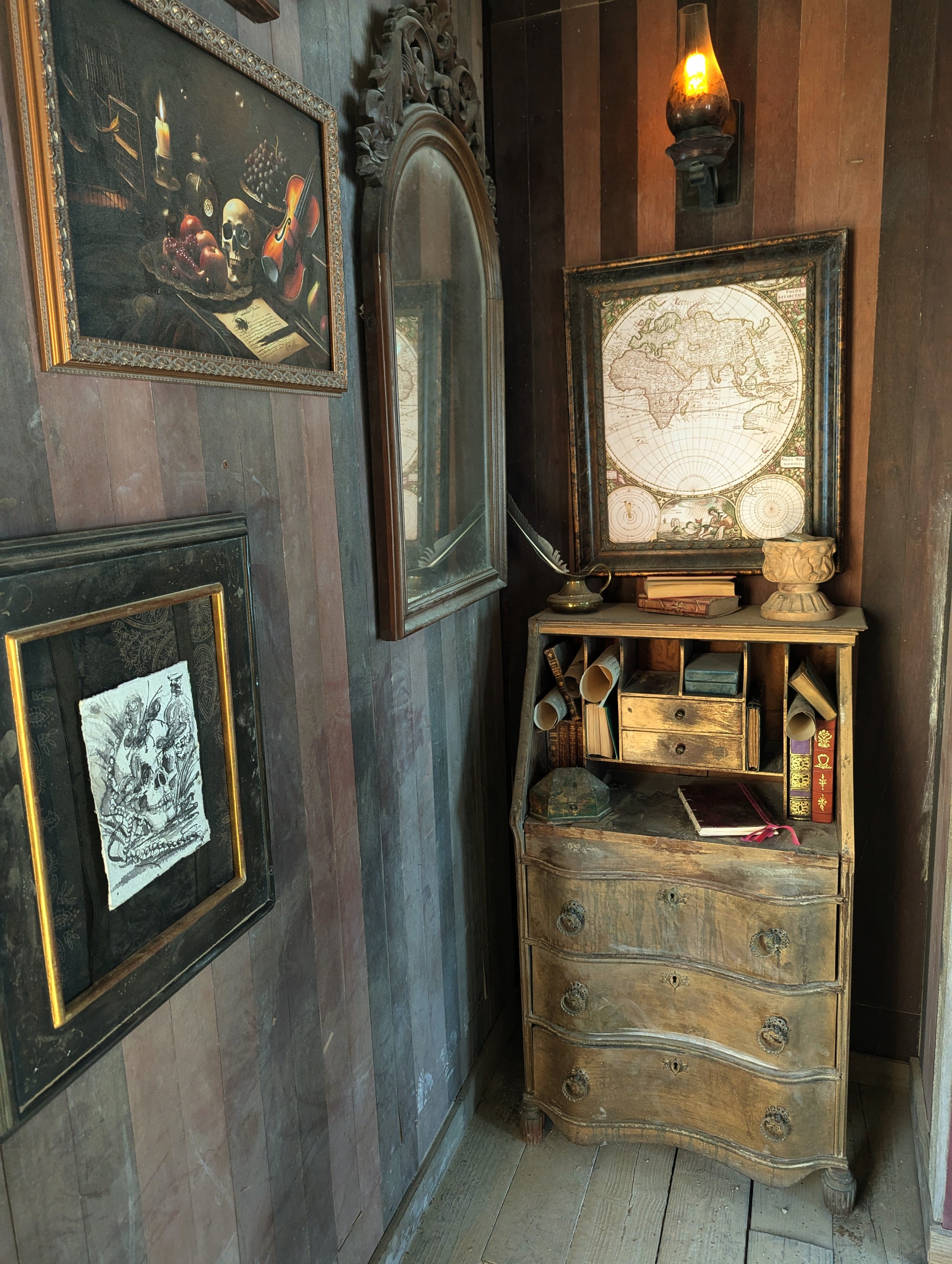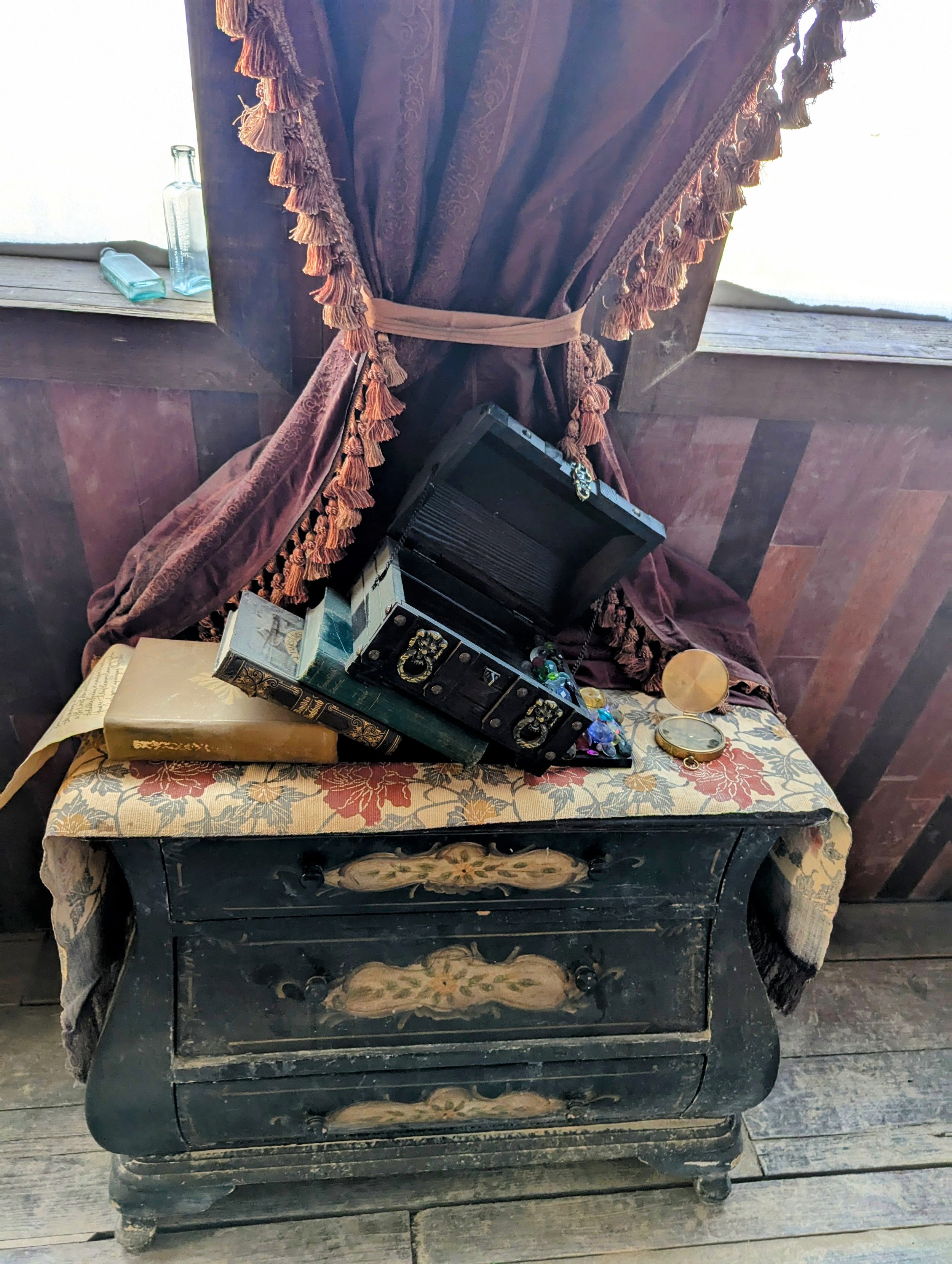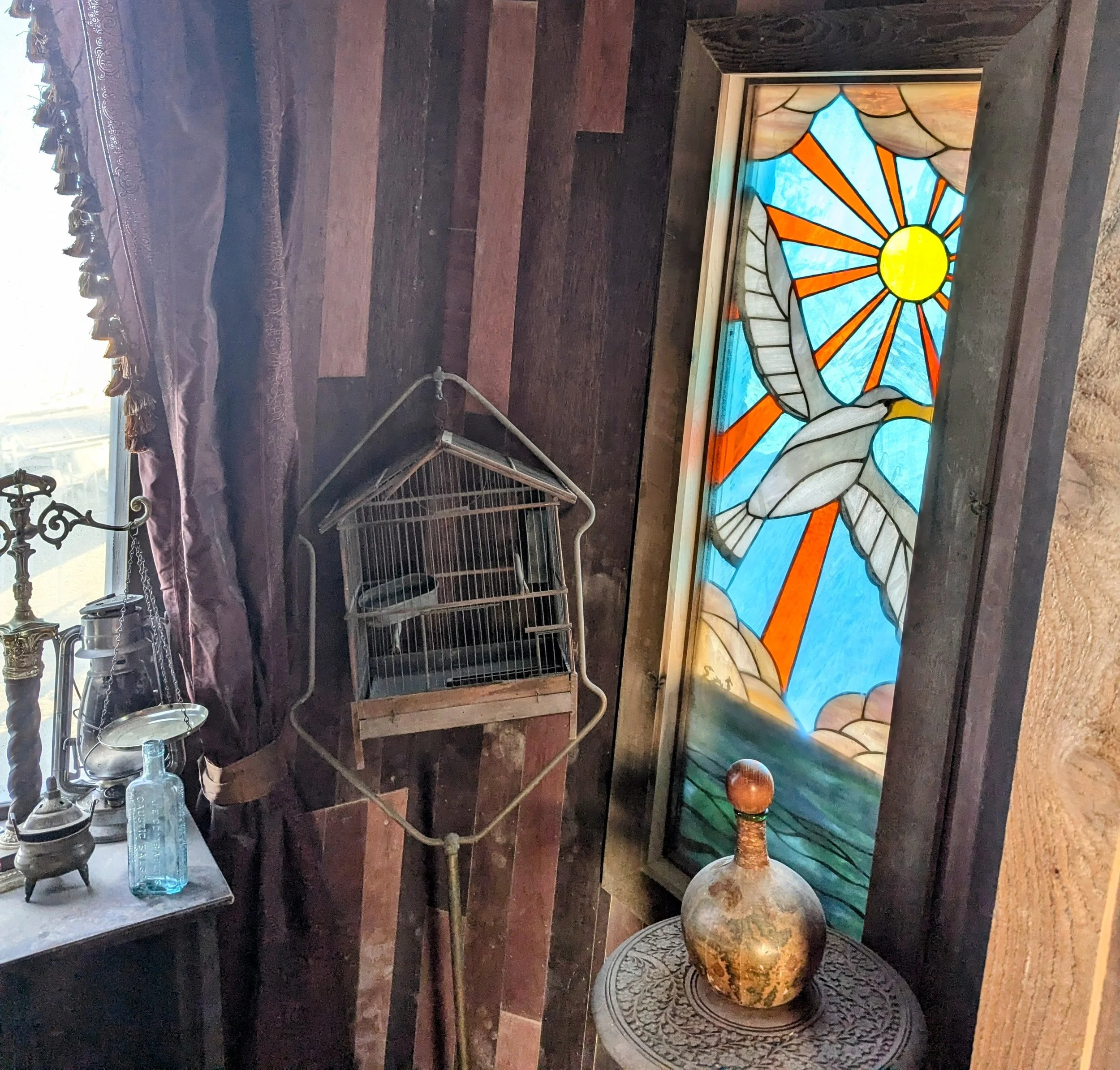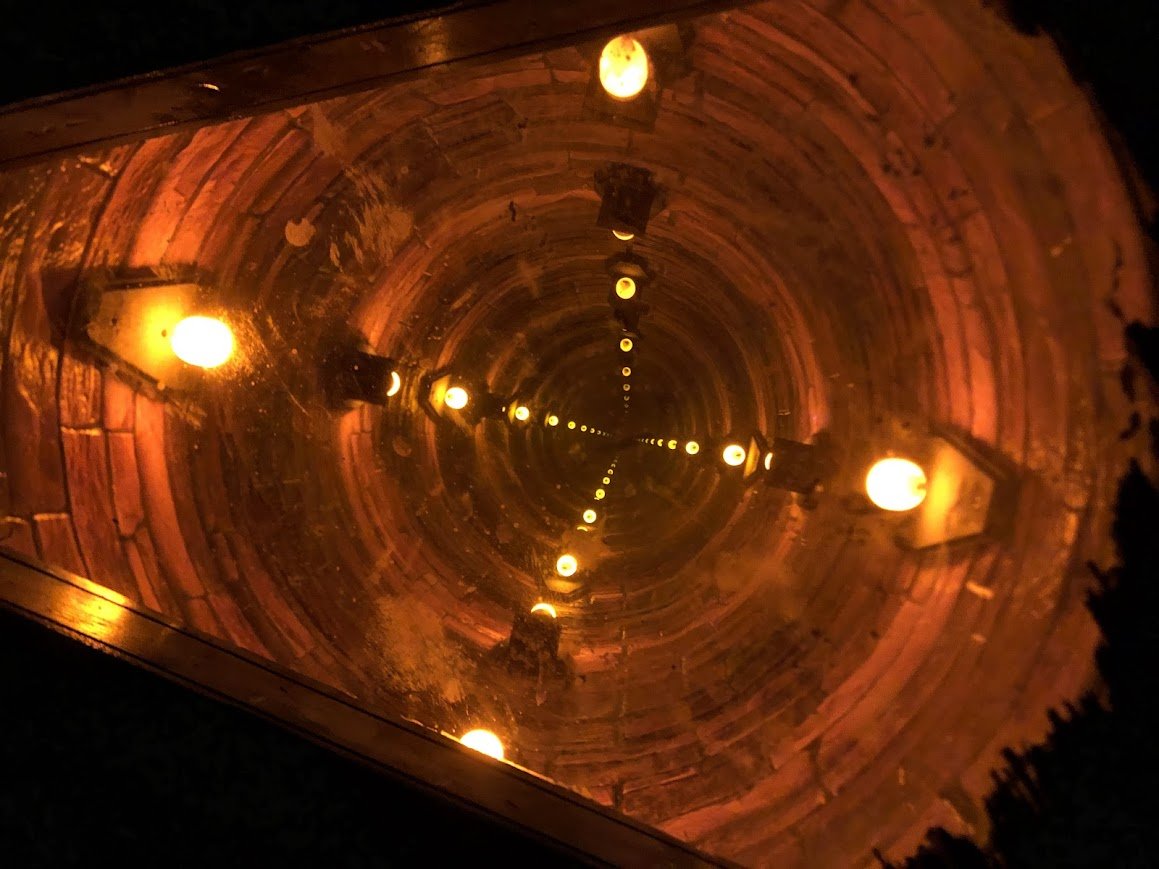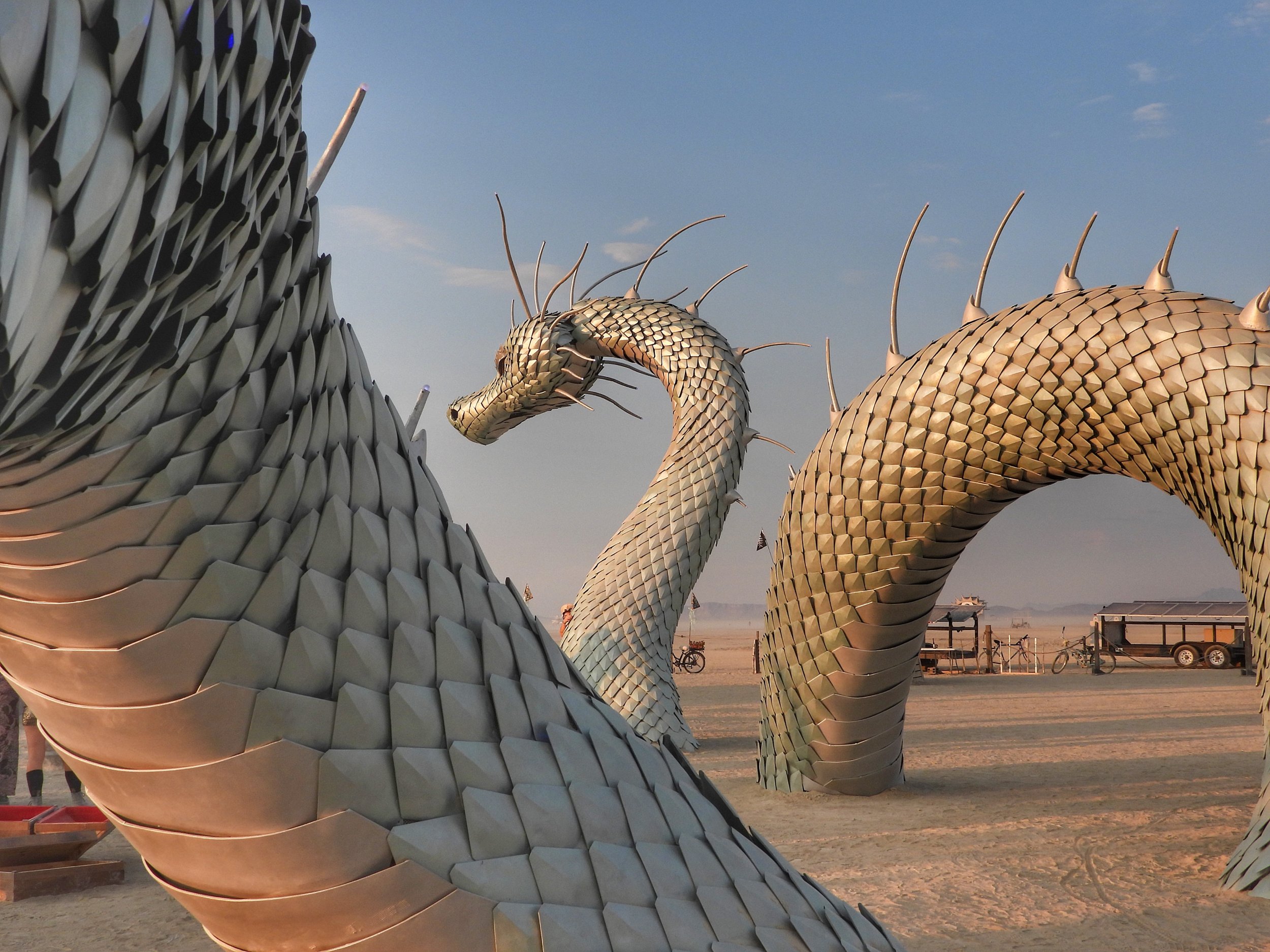
NAGA
Naga was inspired by Cjay’s favorite childhood book, Cyrus the Unsinkable Sea Serpent, by Bill Peet.
Cyrus is a aimless, but loveable sea serpent who accepts a challenge from a shark to sink a ship full of people.
During this challenge he becomes sympathetic to the passengers of the ship and ends up going through many challenges to ensure they have safe passage on their voyage, becoming a hero. Cyrus goes against the stereotype of a scary sea monster.
Cjay was inspired by this book and how it challenged assumptions of what a monster was. The things that seem to be there to hurt us might actually be there to help.
Cyrus sparked the idea, but Cjay wanted to draw on more mature myths into the piece. In her research she found that western lore was entirely monsters who terrorized sailors. However, she discovered Nagas eastern traditions. Nagas are shapeshifting deities who protect treasure and knowledge from people who would misuse them.
This perfectly captured the essence of the creature Cjay wanted to create. Not Cyrus the doofus do-gooder, but a noble and fearsome treasure protecting serpent.
Naga is not a half snake half human diety, and he is not Asian. He’s an evolution of Cyrus… a lost soul who found a purpose and strength in being a protector. However Naga is just his name. And yes Naga is a boy, because the name for a female Naga is Nagini… and that’s the snake from Harry Potter.
As we are lacking any positive snake mythology in the West, Naga is taking inspiration from the East to find what lurks in our shadows and reconsider it’s purpose. He is also there to make us question what treasure really is, and if we are ready to handle the great power that comes with it.
Also, he loves hugs and blowing bubbles :)
Naga is hand made.
He is made up of 5 different sections, 3 humps, a neck and a tail. His body twists and turns in many different directions with the fluidity of water.
He is made of a steel frame, wrapped with a stainless steel mesh. His frame is painted with 2 coats of boat epoxy to protect him from rust.
His scales are made from laser cut aluminum, each one hand rolled in an English wheel, crimped, etched, primed (twice), and painted with a high-end UV paint finish. He has over 5,000 hand made scales, all created by our amazing crew of volunteers.
Inside Naga are color changing LED flood lights focused to shine out through each scale. His spikes are made from aluminum tubing that was cut and welded into a taper. Each spike has an LED wired into it with an acrylic cap.
He has a custom 3D printed bubble machine that lives inside his head and blows bubbles out of his nose. He also has a cloaca you can peer into with an prism infinity mirror that cycles through a kaleidoscope of different videos.
His spike sheaths and eyebrows are all hand cast using recycled aluminum.

The Aldrovanda
The Aldrovanda came to be when Cjay brought in her co-conspirators Stephanie Shipman and Jacquelyn Scott to build a scene around Naga.
Together they wrote the story of the Captainess, based in the 1700s, this strong female symbol shaped the look and feel of the Aldrovanda.
The Captainess is an explorer, botanist, and archeologist who funds her travels by transporting cargo across the sea. Like all female explorers of her time, she often had to disguise herself as a man to work on ships, and travel in foreign lands.
Her ship is pieced together from parts of other ships- a Frigate in the front, a Galleon in the back.
The name, Aldrovanda, is after the world’s only free floating, salt water carnivorous plant - found in all oceans of the world!
The Aldrovanda is hand made.
The ship is made of a broken bow, stern, and a tall mast with a crow’s nest. The stern has two levels of windows, like a Spanish Galleon, the top ones are to our captainess’ quarters and the bottom are windows to view into the cargo hold below. It’s deck is tipped at 2 different angles give the illusion of a ship drifting in the waves. On the rear of the stern is a hand painted mermaid mural by Ursula Young. On the upper deck is a ships wheel, of course, that can be steered as if on a real ship.
The mast was 35 feet tall made of steel and wood, with two steel cable rope ladders leading to the crow’s nest. A hand made flag of the Aldrovanda plant hangs from the top.
The bow, broken into two pieces, has a hand carved merman figure, modeled after one of our crew members. Aluminum cast barnacles dot the sides of the ship. Each barnacle a 3D replica face of a different crew member making their best ‘barnacle face’.
We repurposed as much material as we could during this build. The railing banisters coming from a Spanish estate being remodeled. The floor boards were from a wooden deck. Many of to props and decor thrifted or found to create transport the viewer into our story.
Modeled after a real ship, it is built like a theatrical set piece, with the ability to come apart into small pieces and flat packed for transportation. Throughout the entire piece each board you see was carefully cut, stained, and placed in a organic pattern. Flickering lanterns surrounded the piece with lights that replicated water shone onto the ground.

The Captainess’ Quarters
While we don’t get to meet the Captainess directly, we were able to explore her quarters. Her quarters were filled with handmade maps, journals, botanical oddities, and carefully curated props. Ornate woodwork, custom stained glass windows, hand painted details and mosaic inlays decorated the stern.
On of our volunteers created hand made botanical ink from oak galls, a common method of the time period.
There was a message in a bottle station with a set of prompts. There was a wardrobe filled with clothes and costumes for men and women.











